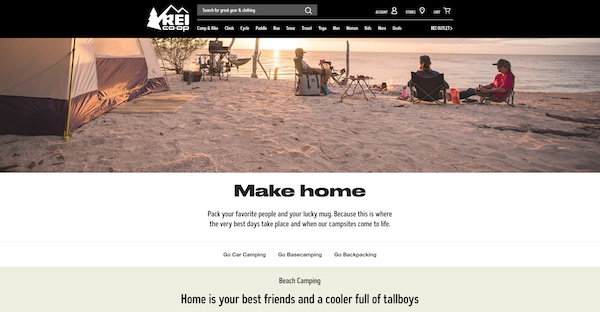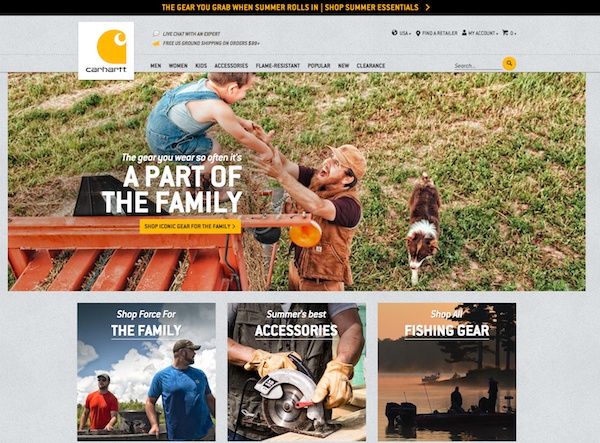Trends become opportunities. That’s what I heard as an invited guest at IBM’s massive "Amplify" conference in Tampa.
I had unprecedented access and received a firehose of information from one of the world’s most valuable brands.
Big Blue is one of the few information technology companies with a continuous history dating back to the 19th century when they were computing time records with punch cards.
With that long history and the appeal of their Jeopardy-winning supercomputer Watson, I knew I would receive a treasure trove of new retail trends and marketing abilities.
The three main areas I found particularly interesting for business owners who want to keep up with consumer and retail trends:
- Marketing
- Analytics
- Store Operations
Marketing
Relevance is when what you want to say intersects with what shoppers want to hear.
We have to move from product-centricity to customer-centricity. "It’s not about the products!" You’ve heard me say that hundreds of times.
There are 350 million websites out there. Browsing activity on your site doesn’t compare with the human-to-human shopping experience in a brick-and-mortar store.
So, how can you humanize your websites?
Are you engaging your visitors with dialogue when they come to yours? Are there barriers, friction points if you will, to getting visitors to buy?
One speaker named these four stages of a shopper’s online buying process. Your site should address each step seamlessly:
- Discovery – They see how a product is useful
- Exploring Options – They understand their choice of options
- Purchasing – You’ve made it easy for them to buy
- Relationship - They’ll choose to come back based on the good experience
Discovery begins with the brand messaging on your home page. Whatever the industry or current retail trends, there should always be an emphasis on people and lifestyle, not products only.
REI and Carhartt websites both do an excellent job with their messaging.

I loved learning REI’s philosophy too:
"There is no mission without margin, and no margin if there’s no mission."
Here is another site that works...Carhartt.

Notice in both examples how you are drawn to the images of people sharing and humans interacting in a human world. Then notice the messaging: REI says, "Home is your best friend," and Carhartt says their product "becomes part of the family."
Another excellent point shared about website design: Design for mobile first. As you do that, remove anything that makes the site hard to navigate, search, and ultimately buy from.
It’s funny. Retail trends suggest 69% of customers said they had had a superior customer experience online. Yet, only 1% of all e-commerce visitors convert to a sale.
How to keep customers happy and make the experience a bit more human?
One presenter advised checking in with online buyers at 30, 90, and 180 days from purchase with a simple email asking, “How happy are you with your purchase?”
You could then suggest they share their thoughts by writing a product review or replying with a happy or frowny face. It’s up to you.
It’s a follow-up that keeps customers loyal to you and builds word of mouth. Actually, that’s a good idea for in-person shoppers, too.
We know the best service is personal one-to-one.
See also: How Engaging Is Your Store's Customer Experience? Take This Quiz
In fact, Tanmay Bakshi, an IBM software developer, said recently:
“A computer’s power is not with natural language; it’s with math. A human is better at talking to people.”
I can’t agree more.
Whether you are an online-only merchant, a brick-and-mortar shop with an informational website, or a skillful omnichannel merchant, you must make your online content more relevant and personal.
Personalization
Basic personalization can deliver a different message based on sex or age, but Big Data can go bigger than that. Different demographics react differently to different messaging and content.
- What if you knew your customer was a dog lover?
- What if you knew the breed?
- What if you knew it came from a Rescue Organization?
What if you could pull all that information into your website to change the content where appropriate and speak to that customer personally?
That’s what personalization is aiming to do - to know you so well that you feel they are speaking directly to you.
Having said that, there is always a danger that automated personalization doesn’t allow a visitor to discover new and different as quickly. It’s also not human, so context is key.
Consider what some websites do for personalization right now
You’ve got a holiday party to go to. You go online and search for red sweaters. You see a couple of sites but then get distracted, wondering what you will bring.
You open another browser window and search for holiday recipes. You click on one using Myers Rum and cinnamon. You close out the browsers without buying or taking any other actions.
When you return to read the NYT, you notice ads for red sweaters in the middle of the articles. If you go to another site, red sweaters and Myers Rum ads appear. Based on your previous browsing, you have been remarketed across the web with ads for Myers Rum and red sweaters.
Some would say this was personalized content.
Now, if you were in a store and they remarketed you with everything you picked up to look at, it might be like having a sidekick running around you screaming, “RED SWEATERS! RUM! CINNAMON! HOLIDAY RECIPES!”
No human in a store would ever do that. And on the web, it’s just plain annoying. Sadly, these are the retail consumer trends in the online space right now.
However, predictive logic is advancing quickly and will soon be able to correlate many more touchpoints. Marketers can deliver the right message at the right time in the right context.
Content on web pages you visit will include information from your browsing behavior and past spending history, social media profile, and activities.
Take my free 5-part email course to learn how your retail store can outsell any online retailer. You can begin your first lesson by entering your name and email address below ...


